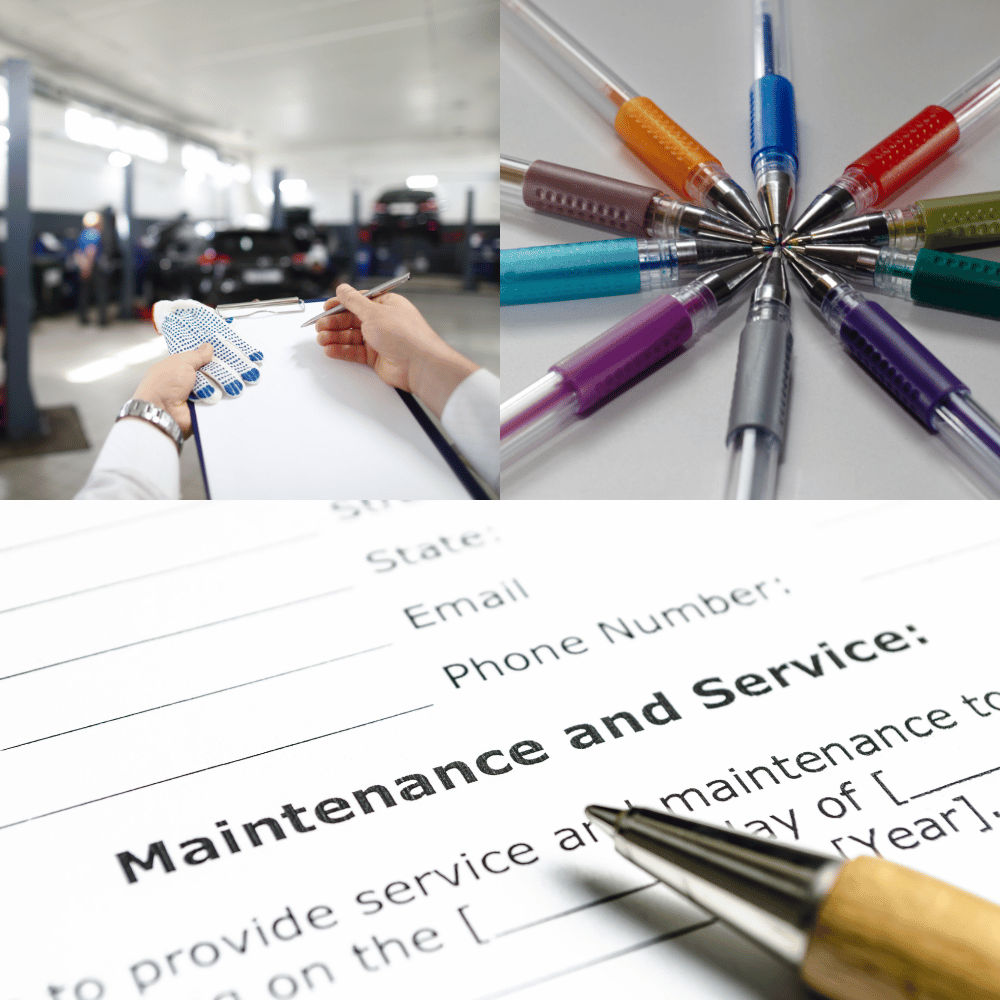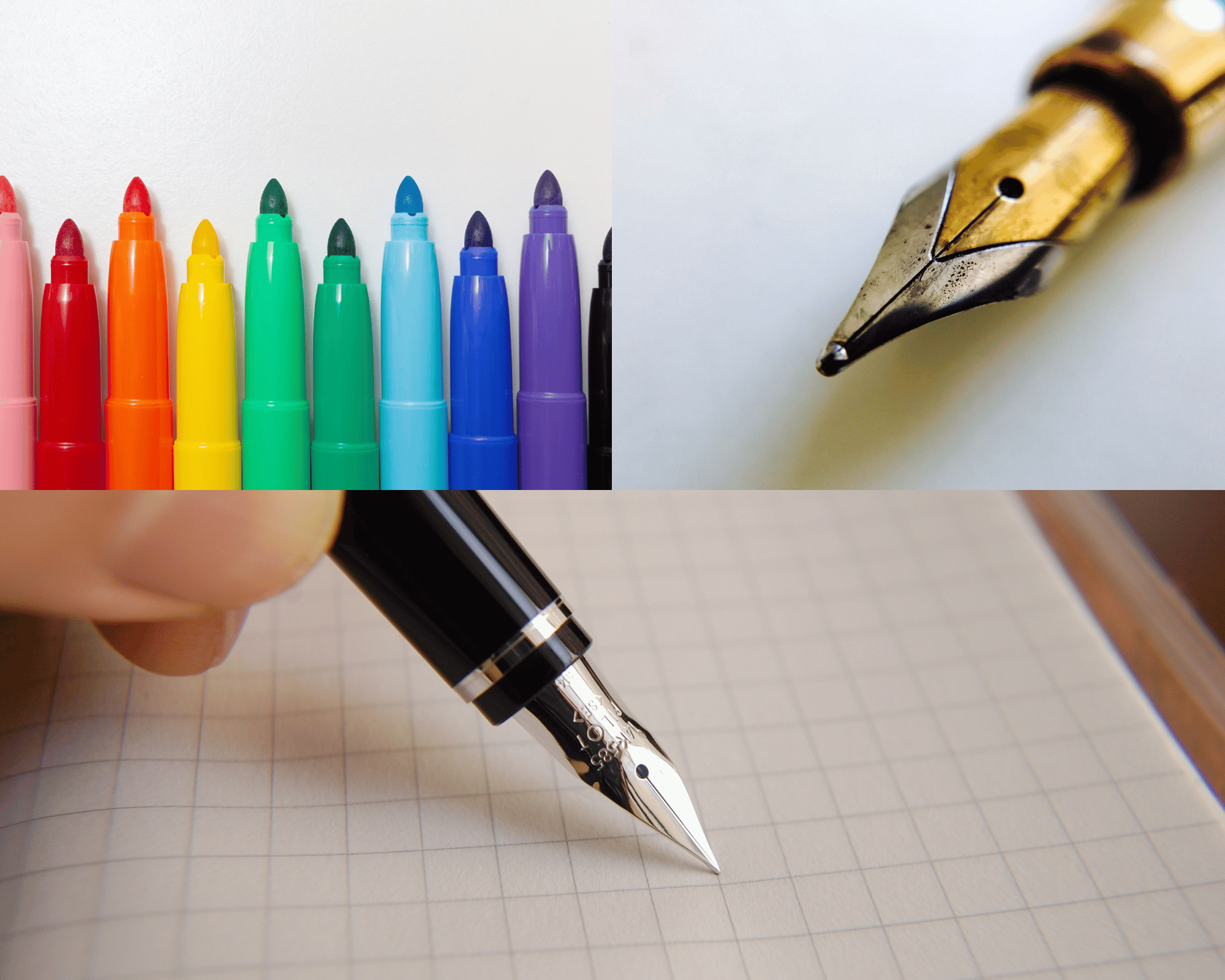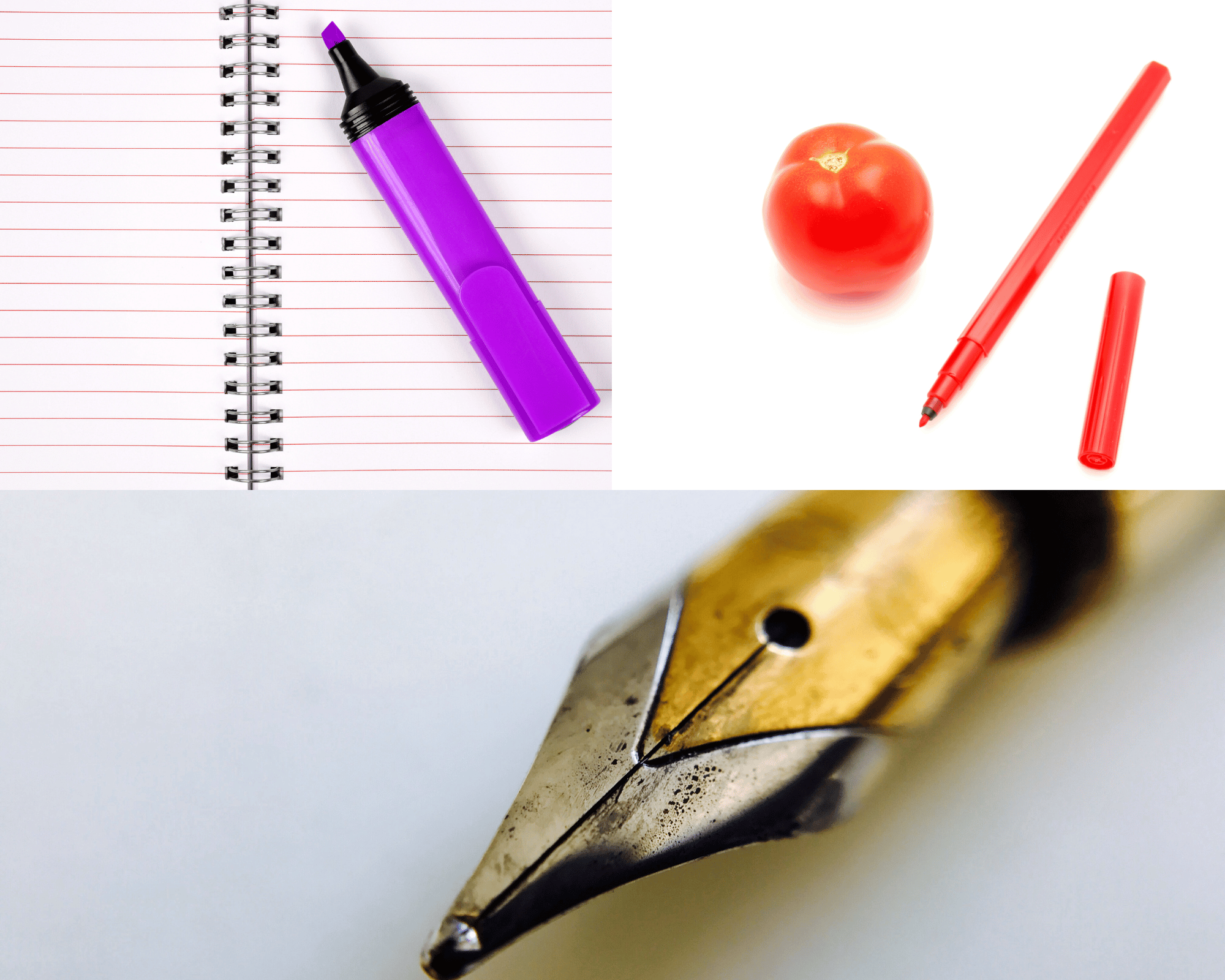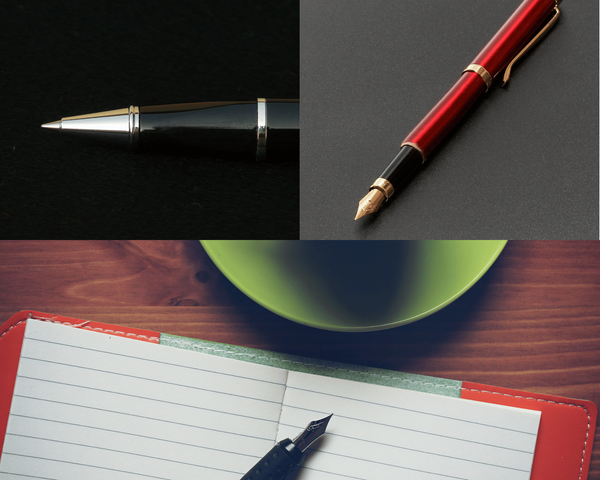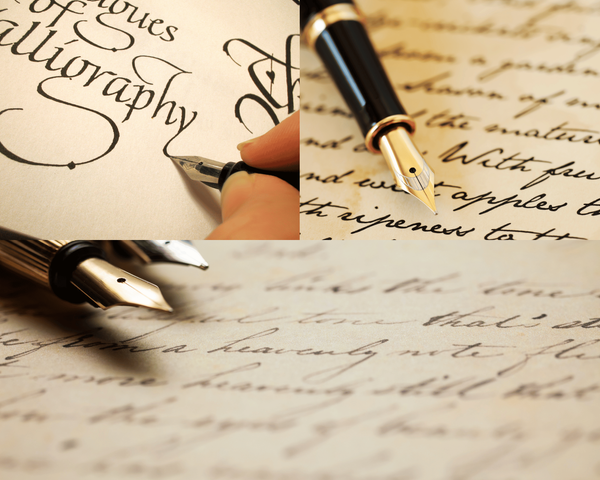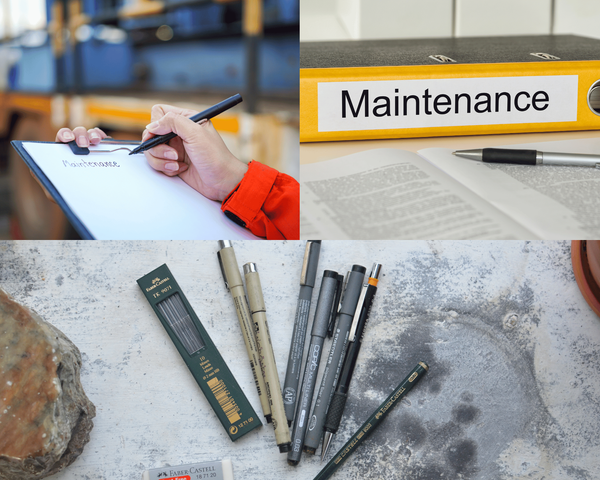To keep your pens working smoothly, regular cleaning is a must. This guide offers essential pen maintenance cleaning tips to help you maintain your pens. Learn when to clean, the tools needed, and detailed steps for various pen types.
Key Takeaways
- Regularly clean your fountain pens every 4 to 8 weeks to maintain optimal performance and prevent ink clogs.
- Use essential tools like a bulb syringe, soft cloth, and pen flush solution for effective cleaning and drying.
- Proper storage and lubrication of pen mechanisms enhance longevity and prevent issues like ink leakage.
When Should You Clean Your Pens?
An important aspect of fountain pen maintenance is recognizing when to clean your pens. Signs that indicate it’s time for a cleaning include inconsistent ink flow, skipping, and dried ink buildup. These signs indicate that your pen requires cleaning.
Perform a quick rinse after each use and a thorough cleaning every 4 to 8 weeks or when changing ink colors. This routine prevents residual ink buildup and ensures smooth operation. Inks like iron gall and pigmented inks clog more easily and require more frequent cleaning.
Regular cleaning maintains the longevity and optimal performance of your pens. Following these guidelines prevents malfunctioning and extends the life of your cherished writing instruments.
Essential Tools for Pen Cleaning
Keeping your fountain pens in pristine condition requires the right tools. Essential tools include a bulb syringe, soft cloth, paper towel, and a pen flush solution. Each tool plays a vital role in ensuring thorough cleaning and drying of your pens.
Paper towels, napkins, microfiber, and terrycloth towels absorb excess water and dry the pen after cleaning. A bulb syringe efficiently flushes water through cartridge-converter pens, while an ink syringe cleans ink cartridges or flushes areas too small for the bulb syringe.
Cotton swabs scrub hard-to-reach areas and soak up excess water during cleaning. Using these tools ensures proper maintenance, enhancing ink flow and longevity.
Step-by-Step Guide to Cleaning Different Types of Pens
Cleaning fountain pens involves general steps that vary with the type of pen. Always empty the pen of ink by removing cartridges or blotting before starting. The main goal is to flush out the ink with clean water, often by rinsing under tap water.
Various types of fountain pens require specific cleaning and maintenance regimens. Here are specific cleaning methods for cartridge/converter, piston-filling, vacuum-filling, and eyedropper fountain pens.
Cartridge/Converter Fountain Pens
Remove the cap and unscrew the section to take out any cartridges or converters. Empty the ink from the converter. Next, detach the nib from the converter for further cleaning.
Flush the converter several times with water or clean the pen parts separately to remove residual ink. Soak the nib and section in a cup of clean water, replacing it when saturated until the water runs clear.
Place the nib down in a cup lined with a paper towel to air dry and use a soft cloth to help dry it. Use a bulb syringe to finish cleaning the nib by forcing water through it, and shake the converter with water to dislodge remaining residue.
Piston-Filling Fountain Pens
Turn the piston to empty any remaining ink from piston-filling fountain pens. Fill a bowl with water, insert the nib unit, and repeatedly fill and empty the pen until the water runs clear.
Control where you flick the pen to remove remaining water to prevent nib damage. Consult the manufacturer’s instruction manual for guidance on disassembling and cleaning your piston-filling pen.
Vacuum-Filling Fountain Pens
Vacuum-filling fountain pens require repeated plunging action to ensure thorough clean fountain pens.
Insert the nib into a glass of water and perform repeated plunging until the water runs clear.
Eyedropper Fountain Pens
To clean a fountain pen, unscrew the nib and empty the ink. Thoroughly rinse the barrel and apply silicone grease to the section threads for a proper seal. Additionally, fountain pen cleaning is essential for maintaining optimal performance.
Gently use a bulb syringe repeatedly until the water flows clear. Reapply silicone grease on the section threads to prevent leakage and ensure a secure fit after cleaning.
Advanced Cleaning Techniques
Advanced cleaning methods can be a lifesaver for stubborn ink clogs and hard-to-reach areas. Ultrasonic cleaners effectively target areas difficult to clean manually during the cleaning process.
Use pen flush solutions for stubborn ink clogs, especially with shimmer or sheening inks. For these inks, disassemble the nib and feed for a thorough cleaning.
A toothbrush can scrub visible parts of the feed if disassembly isn’t desired, and a mixture of water and dish detergent can tackle dried ink residue. Homemade cleaning solutions can be effective, but avoid harmful substances like acetone.
Tips for Maintaining Ink Flow
Maintaining fountain pen ink flow is vital for the optimal performance of your fountain pens. Regularly flushing the pen with clean water prevents ink flowing buildup. This practice extends the time needed between deep cleanings. Fountain pen-specific inks prevent clogs and potential long-term damage. Pigmented inks require more frequent maintenance due to their tendency to clog.
Distilled water is recommended for cleaning pens to prevent mineral buildup. If distilled water is unavailable, bottled or filtered water can be used. A bulb syringe is effective for flushing stubborn ink from the nib and converter.
Proper Storage for Your Pens fountain pen ink
Proper storage is as important as cleaning for fountain pen maintenance. The best storage position is generally horizontal for consistent ink flow to the nib. Alternatively, storing pens vertically with the nib up is effective.
Blot the nib with a cloth and use a protective cap to protect it. Store pens in a cool, dry place away from sunlight and heat to prevent ink fading and material degradation.
For long-term fountain pen storage, thoroughly clean the pen and empty the ink reservoir. Regularly inspect and rotate stored fountain pens every few months to ensure they remain in good condition.
Additional Maintenance Tips fountain pen maintenance
Additional maintenance tips can help extend the life of your fountain pens. Lubricate sticky pistons with silicone grease to keep your pen’s mechanisms operating smoothly.
If ink leaks into pen caps, rinse them, use a Q-tip to wipe remaining ink, and let them dry upright on a paper towel. Proper maintenance, including using high-quality ink and avoiding extreme temperatures, significantly enhances your pen’s performance and longevity.
Summary
In summary, maintaining your fountain pens involves regular cleaning, using the right tools, and proper storage. Quick rinses after each use and deep cleaning every few weeks will keep your pens in top condition. Utilizing tools like bulb syringes, soft cloths, and pen flush solutions can make the cleaning process efficient and thorough.
Proper storage and additional maintenance tips, pen flush solution, most pens, bulb syringe such as using silicone grease and high-quality ink, will ensure your pens continue to perform beautifully. By following these guidelines, you’ll enjoy the smooth writing experience that only a well-maintained fountain pen can provide.
Frequently Asked Questions
How often should I clean my fountain pen?
You should give your fountain pen a quick rinse after each use, and do a thorough cleaning every 4 to 8 weeks or whenever you switch ink colors. This keeps it writing smoothly!
What tools do I need to clean my pen?
To clean your pen effectively, grab a bulb syringe, some soft cloths, paper towels, and a pen flush solution. These tools will help keep your pen in great shape!
How do I clean a cartridge/converter fountain pen?
To clean your cartridge/converter fountain pen, start by removing the cap and unscrewing the section to empty the ink. Then, flush the converter with water and soak the nib and section in clean water until it runs clear.
Can I use tap water to clean my fountain pen?
You can use tap water, fountain pen collection but it's better to use distilled water to avoid any mineral buildup that might mess with your ink flow.
How should I store my fountain pens?
You should store your fountain pens horizontally or vertically with the nib up in a cool, dry place, away from direct sunlight and heat. This will keep them in great condition and ensure smooth writing!
